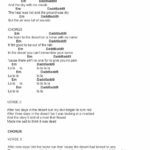For guitarists seeking comprehensive resources to elevate their playing, the landscape of instructional books can be both a treasure trove and a source of confusion. When it comes to soloing, Frank Gambale’s Technique I and II stand out as exceptionally thorough guides. Gambale meticulously outlines various approaches to improvising over chords, delving into scales, pentatonic groupings, arpeggios, triads, and intervals. This detailed methodology equips you with a versatile toolkit, far exceeding the limitations of simply suggesting a couple of scales for each chord. His exploration extends across major, minor, and diverse dominant chord types, meticulously differentiating between altered and unaltered dominants – a distinction rarely found with such clarity in other reference materials.
Shifting focus to rhythm guitar, mastering shell voicings is crucial for simplifying complex chord charts. In this domain, Randy Vincent’s “Guitarist’s Introduction to Jazz” emerges as a top recommendation. Vincent’s approach demystifies intricate chord progressions, making even daunting charts manageable. However, it’s vital to remember that no book can fully substitute the practical experience of grooving with a rhythm section, an indispensable element of rhythm guitar mastery.
Beyond specific techniques, delving into the works of Johann Sebastian Bach offers a wealth of musical inspiration. Many virtuoso players regularly practice from Bach’s sheet music, not only for the technical challenge but also for the profound musical content. Bach’s compositions are a rich source of melodic ideas applicable to soloing and songwriting. This deep dive into classical music is often cited as a distinguishing factor between aspiring players and those who achieve true mastery, enabling them to craft compelling melodic statements. While some attempts have been made to transcribe Bach for guitar tab, these are often riddled with inaccuracies.
Considering resources like the Guitar Grimoire Book series, while they are readily available and widely recognized, a balanced perspective is essential. These books predominantly focus on lead guitar techniques, particularly within the realm of rock guitar. For guitarists aiming to navigate genres like country or jazz, or those seeking in-depth knowledge of harmony and voice leading, the Guitar Grimoire book series might prove less comprehensive than desired. They appear geared towards lead guitarists focused on rock styles, potentially lacking the harmonic depth required for other genres. Ultimately, the suitability of any guitar instruction book, including the Guitar Grimoire book, depends on individual goals and musical aspirations.

